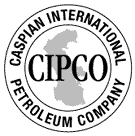|
Winter 1996 (4.4) 
More than a year has passed since the contract for the Karabakh prospect, Azerbaijan's second exploration and production project, was signed.1 Unlike the contract of AIOC (Azerbaijan International Operating Company) for the Azeri, Chirag and deep-water Gunashli project, the Karabakh field is essentially what is known in the industry as a "wildcat" exploration. No wells have ever been drilled to confirm the presence of any hydrocarbons. However, unlike in other parts of the world, the risk in Azerbaijan is not considered to be as great since few dry holes have ever been discovered. Azerbaijan's untapped hydrocarbon reserves in the Caspian are known to be prolific. We know there is a reservoir as previous work has revealed as much. But the real question is, what does the reservoir contain-is it oil or gas or water? Without drilling, nothing can be verified. However, Caspian International Petroleum Company or CIPCO (pronounced "sip-co"), which has been incorporated as the joint operating company for the exploration, development and production-sharing agreement (EDPSA) of the Karabakh prospect, considers the risk acceptable. We believe that if oil is discovered, it will turn into a significant field. In fact, if the rock porosity and permeability of the Azeri, Chirag and deep-water Gunashli project can be used as an analog, the reserves could well equal or even exceed 1 billion barrels or approximately 130 millions tons. The direct investment of this project, if commercial hydrocarbons are found, is estimated to be approximately $2 billion. Using history as a qualifier, service and other support industries will enhance that figure by 50 percent, boosting the overall value of dollars spent to around $3 billion. If the project is successful, it will generate billions of dollars of gross revenue. The economic benefit will be substantial. As in all the other Caspian oil projects, the Karabakh field is also a long-term development project whose full impact will not be realized for years. The Karabakh structure is located approximately 80 km offshore on the North Absheron trend where water depths range from 160 to 225 meters. It is approximately 20 km north of the Azeri, Chirag and deep-water Gunashli project which is being developed by the AIOC Consortium. The contractor parties in CIPCO are Pennzoil Caspian Development Corporation (30%), LUKoil International Ltd. (12.5%), a SOCAR commercial affiliate (7.5%), Agip Azerbaijan (5%), and LUKAgip (45%). CIPCO currently has two senior vice presidents: LUKoil's Pavel Kaufman for Human Resources and Finance, and Agip's Andrea Chiura for Operations. Both report to President James Tilley of Pennzoil. Company roles in CIPCO will rotate every three years. The contract also allows for a senior SOCAR advisor to have a direct line of communication with the management of CIPCO. During the first three-year period of the contract, the minimum work program requires a 3-D seismic program, the drilling of at least three exploration wells and an Environmental Baseline Study and Site Investigation. Budgets have already been adopted for approximately $18.4 million for 1996 and $35.3 million for 1997. To date, CIPCO has already committed a cumulative value of $11.4 million to 20 third-party contracts, of which more than 86 percent are with Azerbaijani companies or joint ventures. Caspian Geophysical was awarded the $9 million contract to perform a 3-D seismic survey of the 427.3 square km Karabakh Prospect and surrounding area. It was begun on September 15 and is scheduled to be completed in mid-December 1996. A priority sub-set of data is being processed prior to the remaining data to assist in defining the location of the first well which will be decided by February 1997. By mid-1997, the first exploratory well will be drilled at an anticipated depth of 4,200 meters in water depth of 185 meters. Discussions are underway concerning the utilization of SOCAR's available semi-submersible drilling rig, the Dede Gorgud, for drilling the exploration wells. ITOCHU (Japan) won the tender for the casing, and delivery is expected by mid-January 1997. ABB Vetco Gray (UK) will be providing the wellhead and conductor pipe. Offshore sampling for the Environmental Baseline Survey was completed by UK's Environment & Resource Technology Ltd. (ERT) on December 1, 1996. Analyses and research are in progress. Plans call for at least 90 percent of the professional staff to eventually be Azerbaijani citizens. Of course, the targets are lower during the early years of the contract period to ensure the introduction of the latest technology and management techniques and to guarantee the fastest, most efficient implementation. Over time, as these new technologies and skills are transferred, first preference will be given to hiring Azerbaijanis. While the initial work commitment covers three years, the time frame can be extended an additional 1.5 years by mutual consent if further work is needed. If commercial hydrocarbons are discovered, the agreement will have a development and production period of 25 years, which may be extended an additional five years. The crucial, early stage will then lead the way for the development phase. A plateau production of 200,000 barrels per day is expected by early next century. James Tilley of Pennzoil is serving as the first President of the CIPCO Consortium. 1 The Karabakh contract was signed
November 10, 1995, and became effective following ratification
by Azerbaijan's Parliament (Melli AI Home | Magazine Choice | Topics | Store | Contact us |


